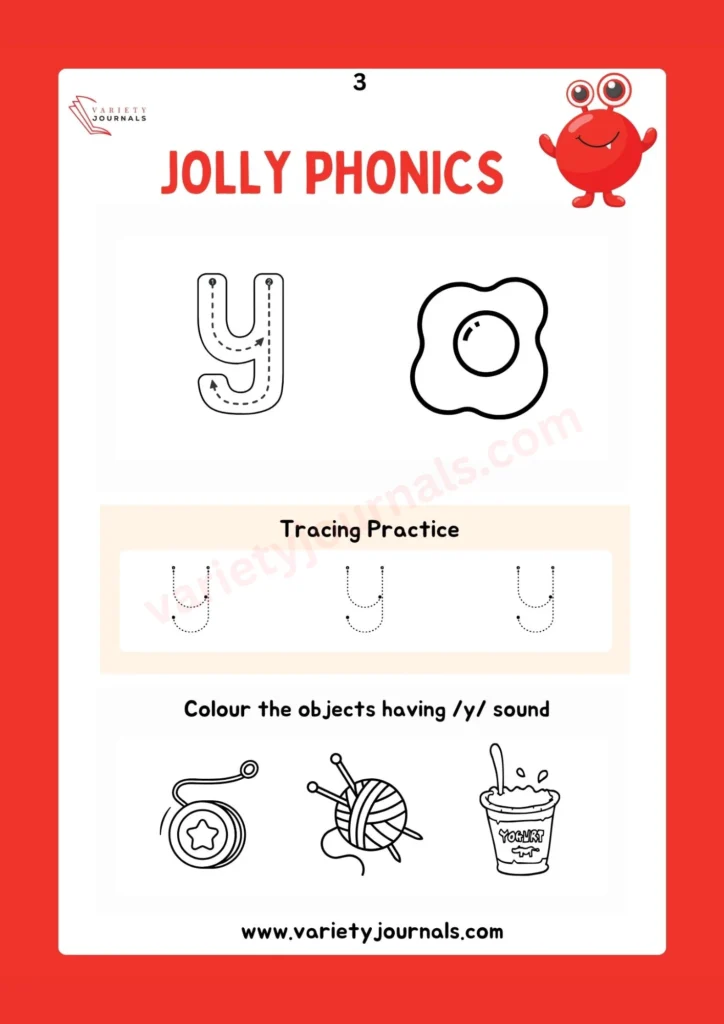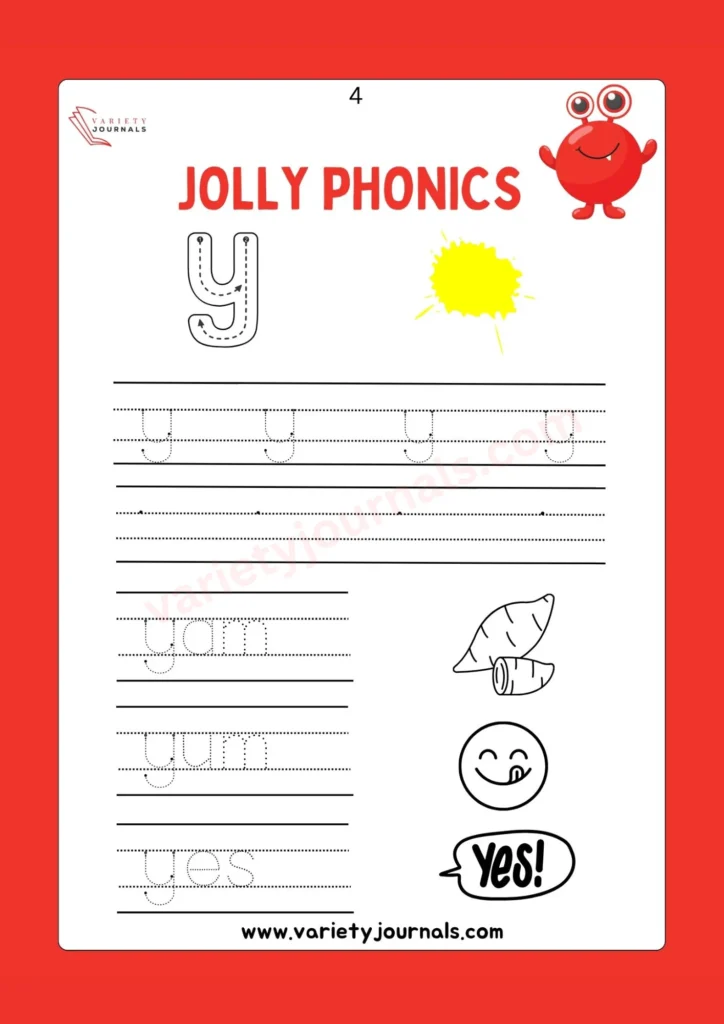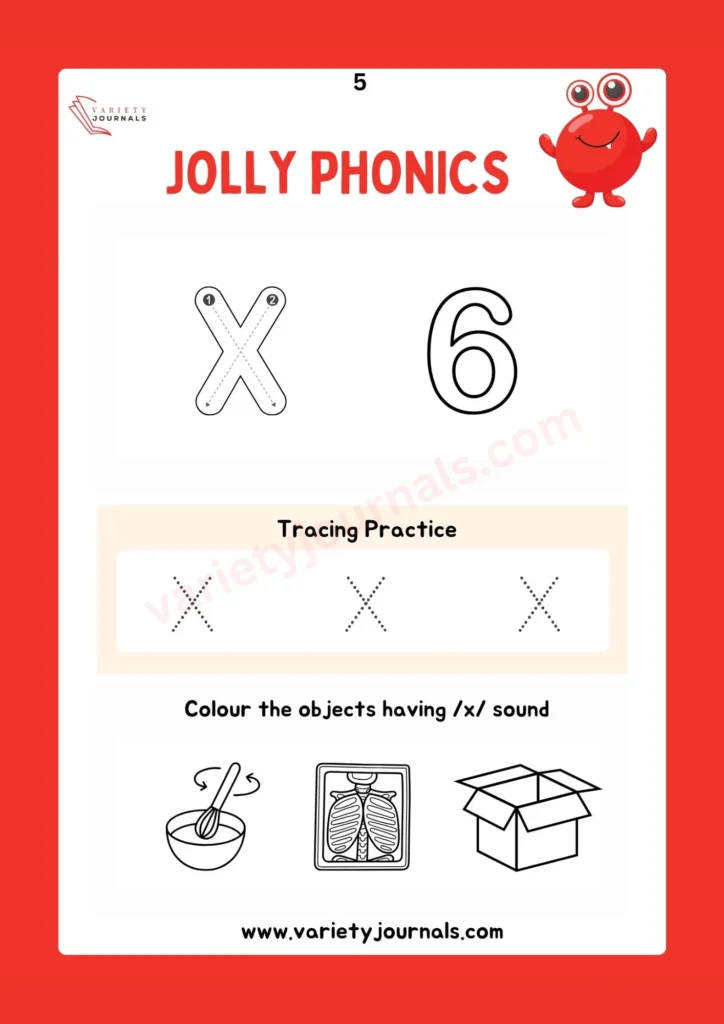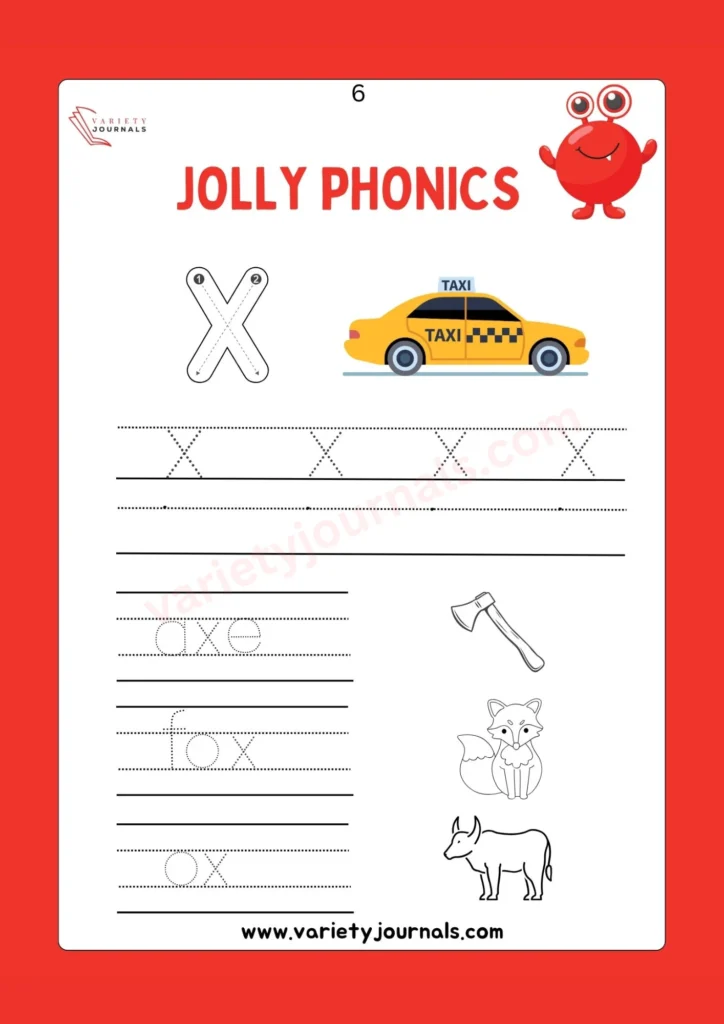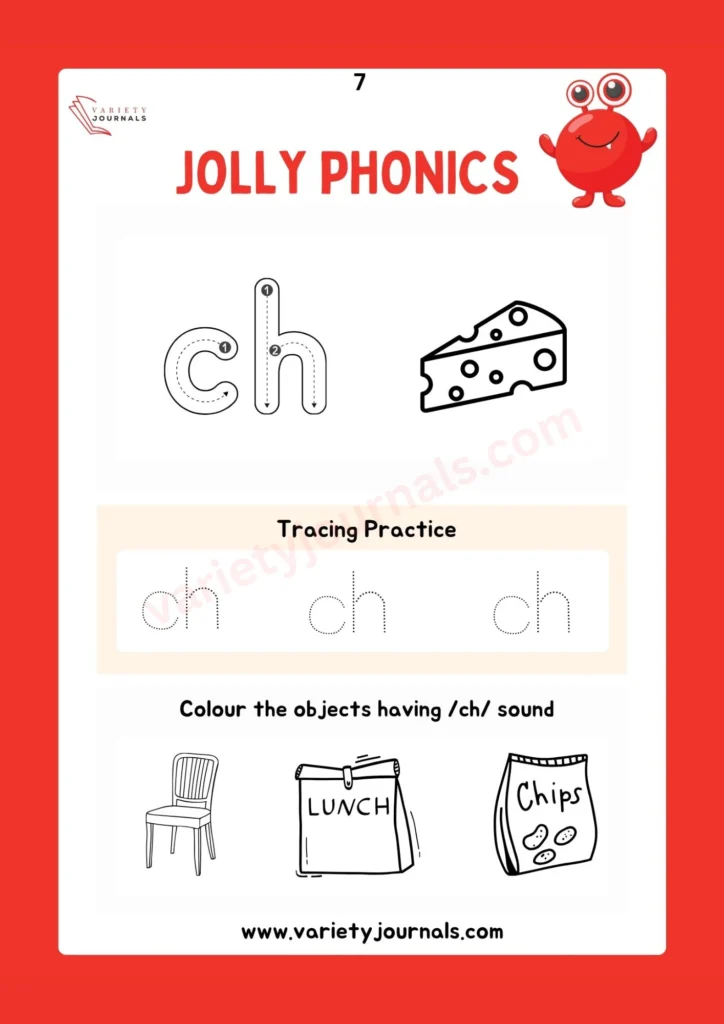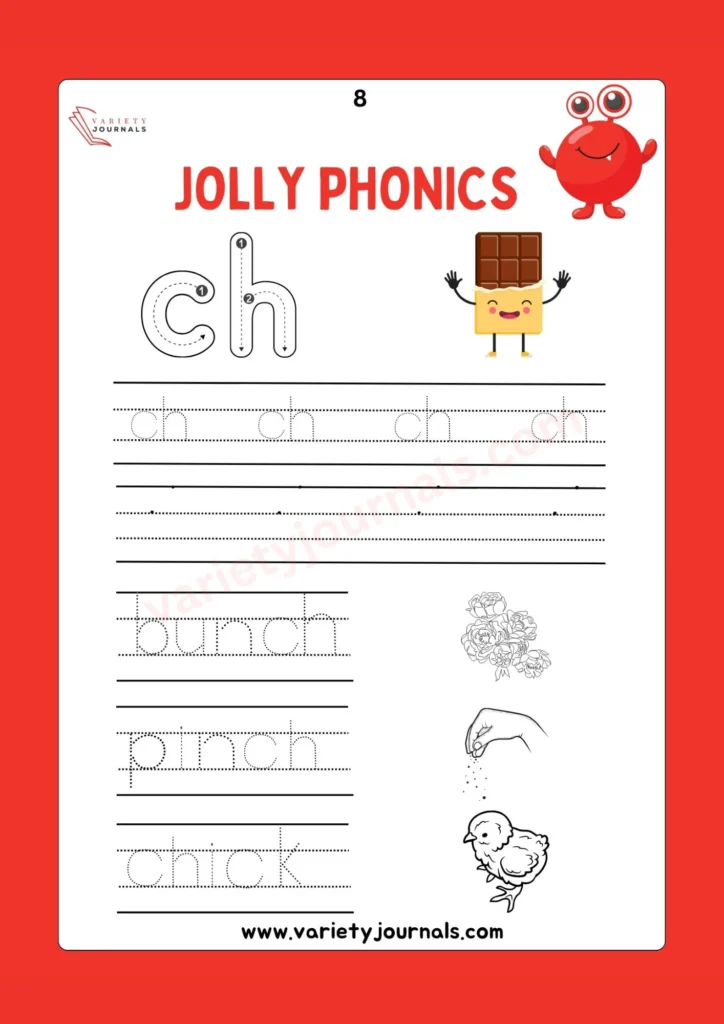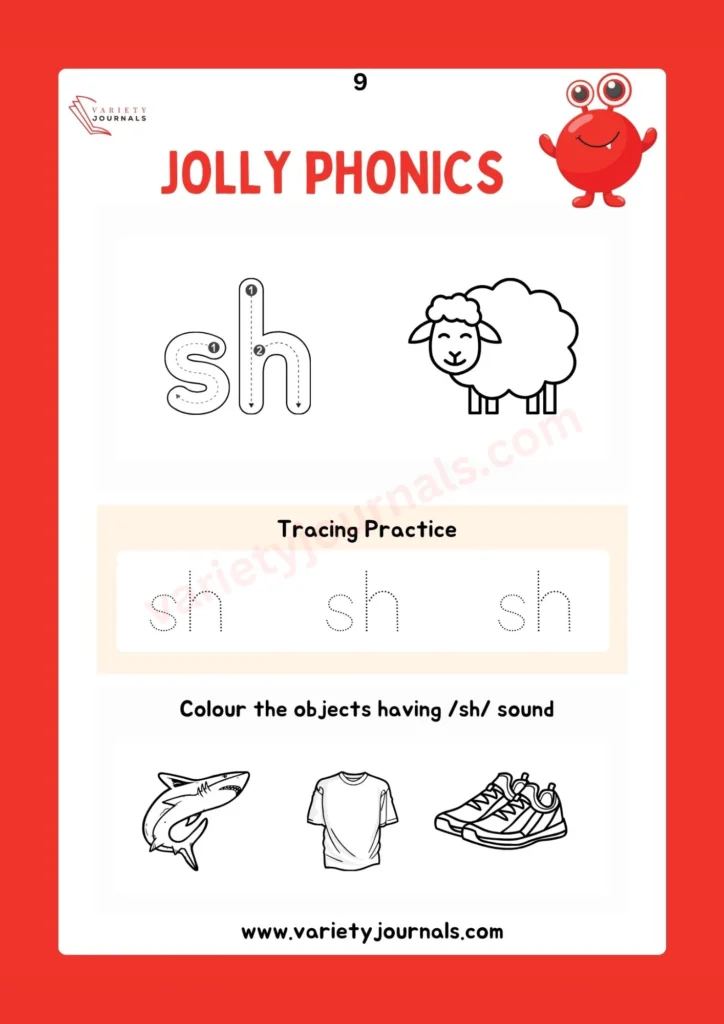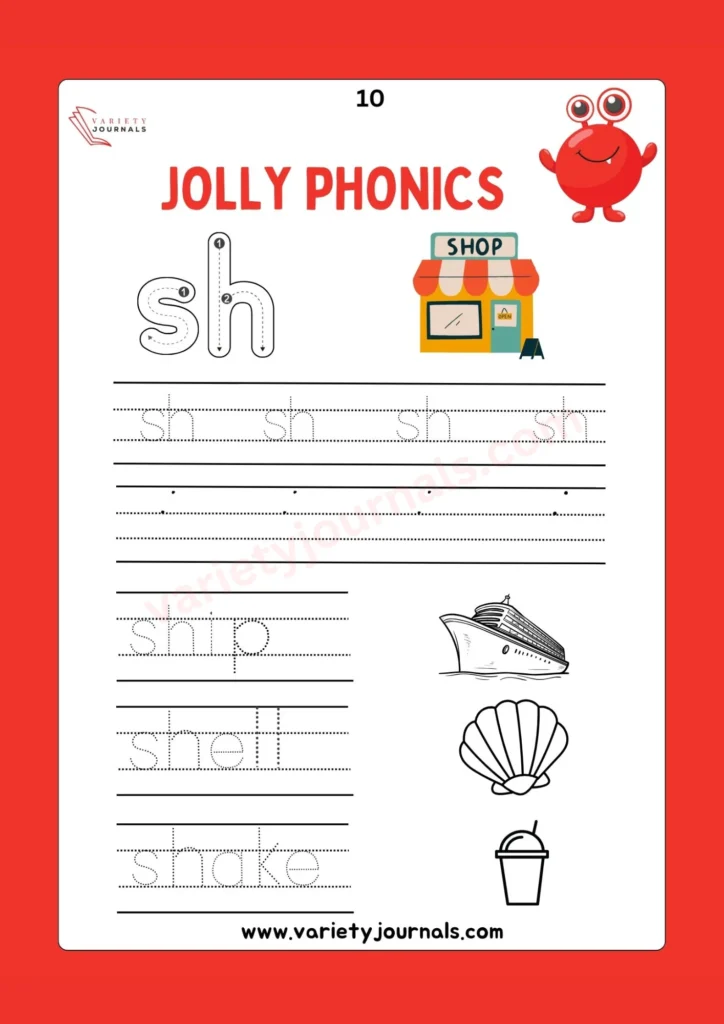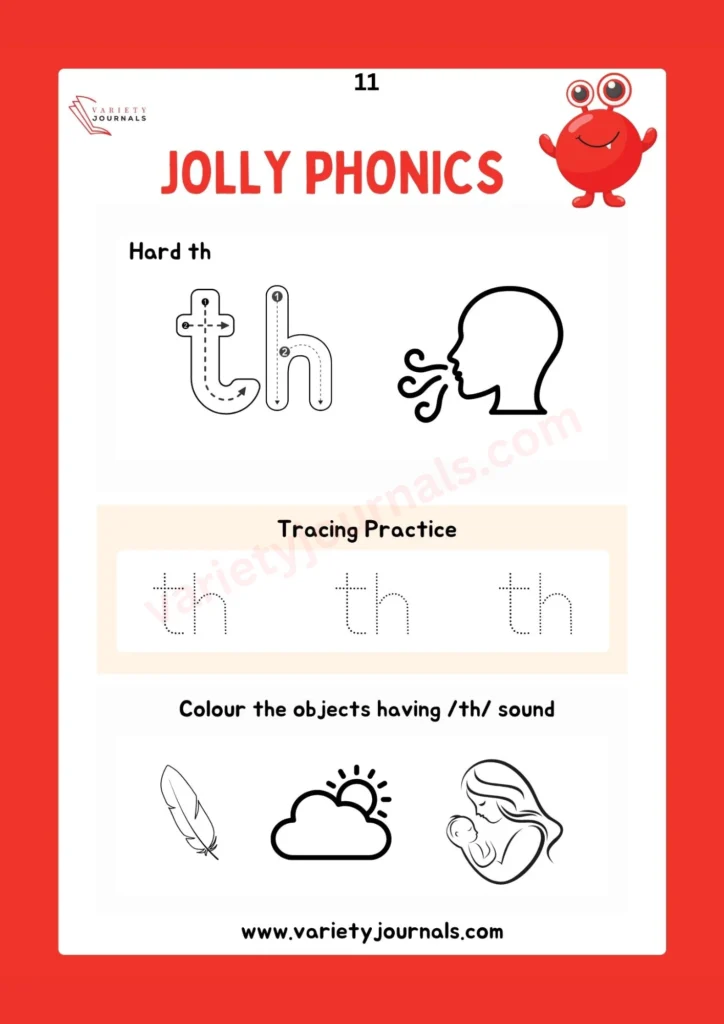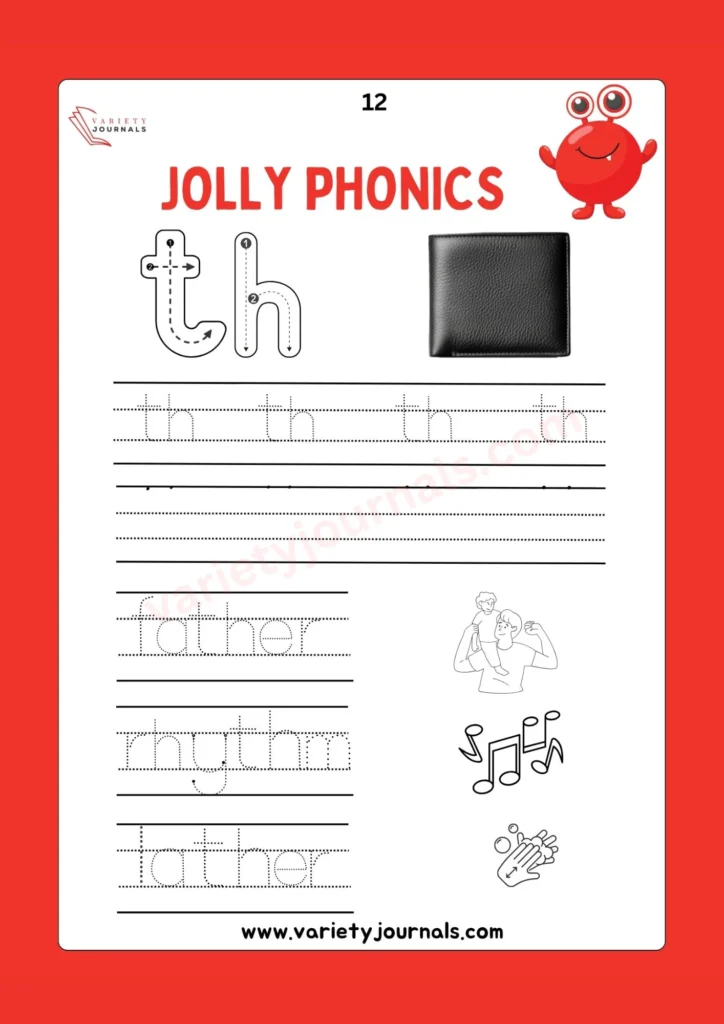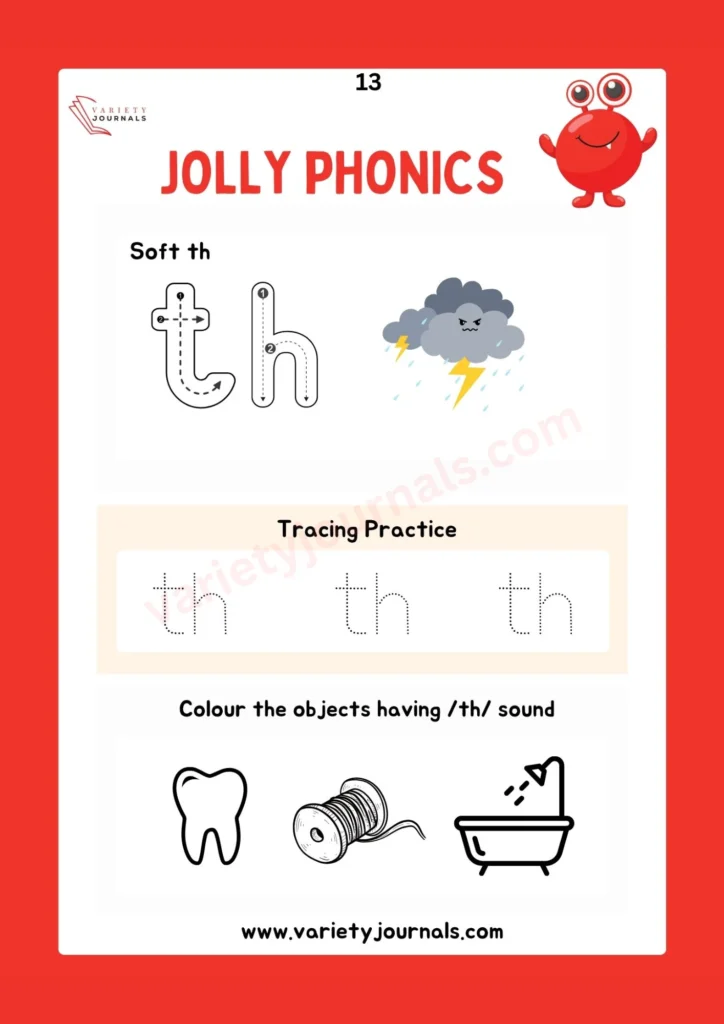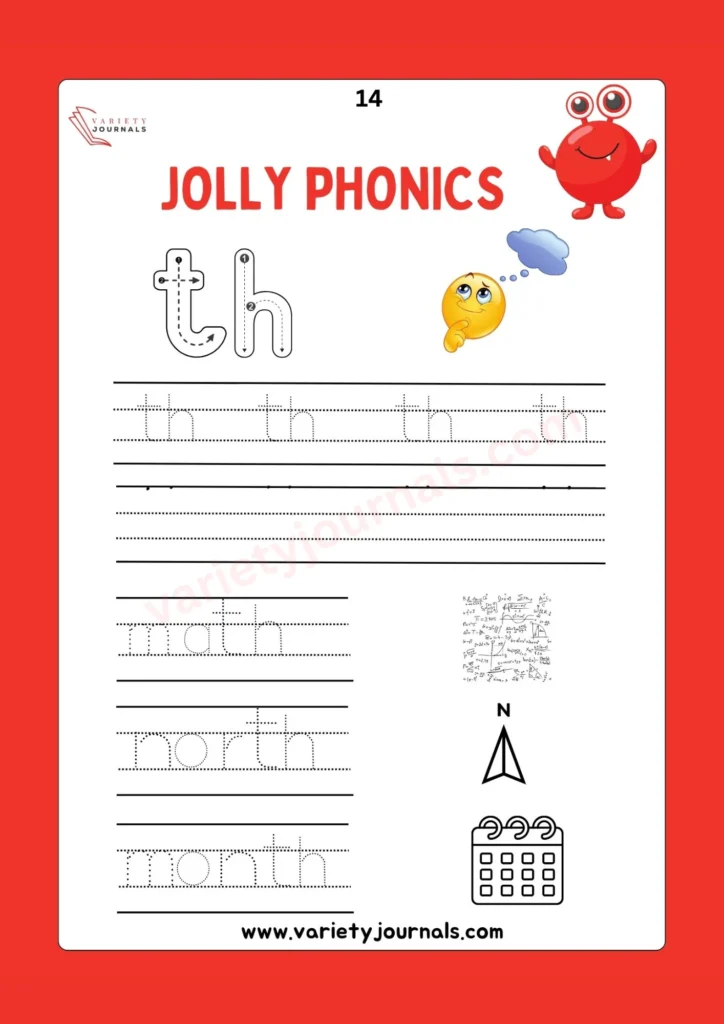Visited 4,187 times, 4 visit(s) today
Jolly Phonics Group 6 Worksheets
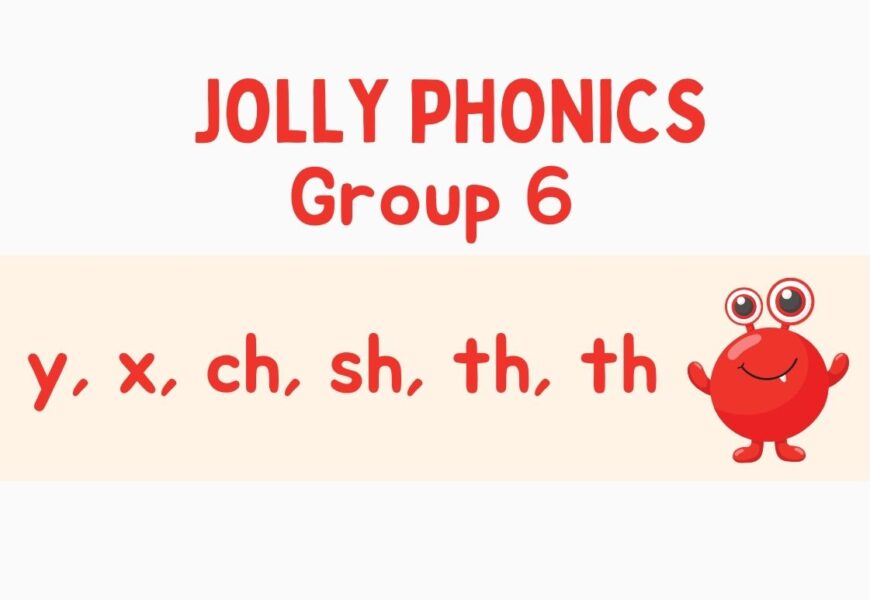

Jolly Phonics Group 6 introduces six additional phonemes: “y,” “x,” “ch,” “sh,” “th,” and “th.” Here’s a comprehensive description of how these sounds are taught in Jolly Phonics Group 6.
In Group 6 of Jolly Phonics, children continue their journey of learning the sounds (phonemes) associated with letters rather than their names. This group introduces six new phonemes, specifically “y,” “x,” “ch,” “sh,” “th,” and “th.”
The order of introducing sounds in Jolly Phonics Group 6 is thoughtfully planned to build upon the foundational knowledge acquired in previous groups. It adheres to the principles of synthetic phonics, prioritizing the most common and essential phonemes to enable students to read and spell more complex words effectively.
Each of the new sounds is introduced individually. For “y,” emphasize the /y/ sound and discuss how it’s found in words like “yes” and “yellow.” For “x,” point out the /ks/ sound created by the combination of “x” and “s” and provide examples like “box” and “six.” For “ch,” explain that it’s a consonant blend with a sound like “tsh,” as in words like “chat” and “chop.” For “sh,” enunciate the /sh/ sound and discuss its presence in words like “shoe” and “fish.” For “th,” explain the two different “th” sounds, /θ/ and /ð/, found in words like “thin” and “this.”
Jolly Phonics often employs actions or visual cues to help children remember the sounds. For “y,” you can use a gesture mimicking the letter ‘y’ shape. For “x,” you can depict the shape of a crossed ‘x.’ For “ch,” you can use a chopping motion to emphasize the /tsh/ sound. For “sh,” you can make a shushing gesture with your finger. For “th,” you can make a thoughtful gesture to convey the “th” sound.
Provide words that contain these new sounds, such as “yellow,” “box,” “chat,” “shoe,” “thin,” and “this.” Encourage students to identify and recognize these sounds within the context of words.
Engage students in reading and writing exercises using words containing these sounds. Encourage them to practice writing words and sentences that incorporate “y,” “x,” “ch,” “sh,” “th,” and “th.”
Incorporate interactive games and activities that reinforce the newly introduced sounds, such as word bingo, matching games, or word hunts.
Our specially designed worksheets are tailored to enhance the learning experience for “y,” “x,” “ch,” “sh,” “th,” and “th” sounds in Jolly Phonics Group 6. These worksheets provide a structured, hands-on approach to learning these phonemes, offering opportunities for students to practice recognizing, reading, and writing words containing these sounds. Through tracing exercises, students further develop their fine motor skills while reinforcing their understanding of letter formation. The colorful and engaging design of the worksheets promotes active participation, making learning enjoyable.
Furthermore, our worksheets align with the principles of Jolly Phonics, which emphasize multi-sensory learning, active engagement, and phonics mastery through consistent practice. They represent a valuable asset for teachers and parents, assisting young learners in cultivating robust phonetic abilities and early literacy competencies. By incorporating these worksheets into the learning process, students can solidify their grasp of “y,” “x,” “ch,” “sh,” “th,” and “th” sounds, enhancing their reading and writing proficiency. These resources offer an interactive and enjoyable means for children to become confident and proficient readers and writers.
